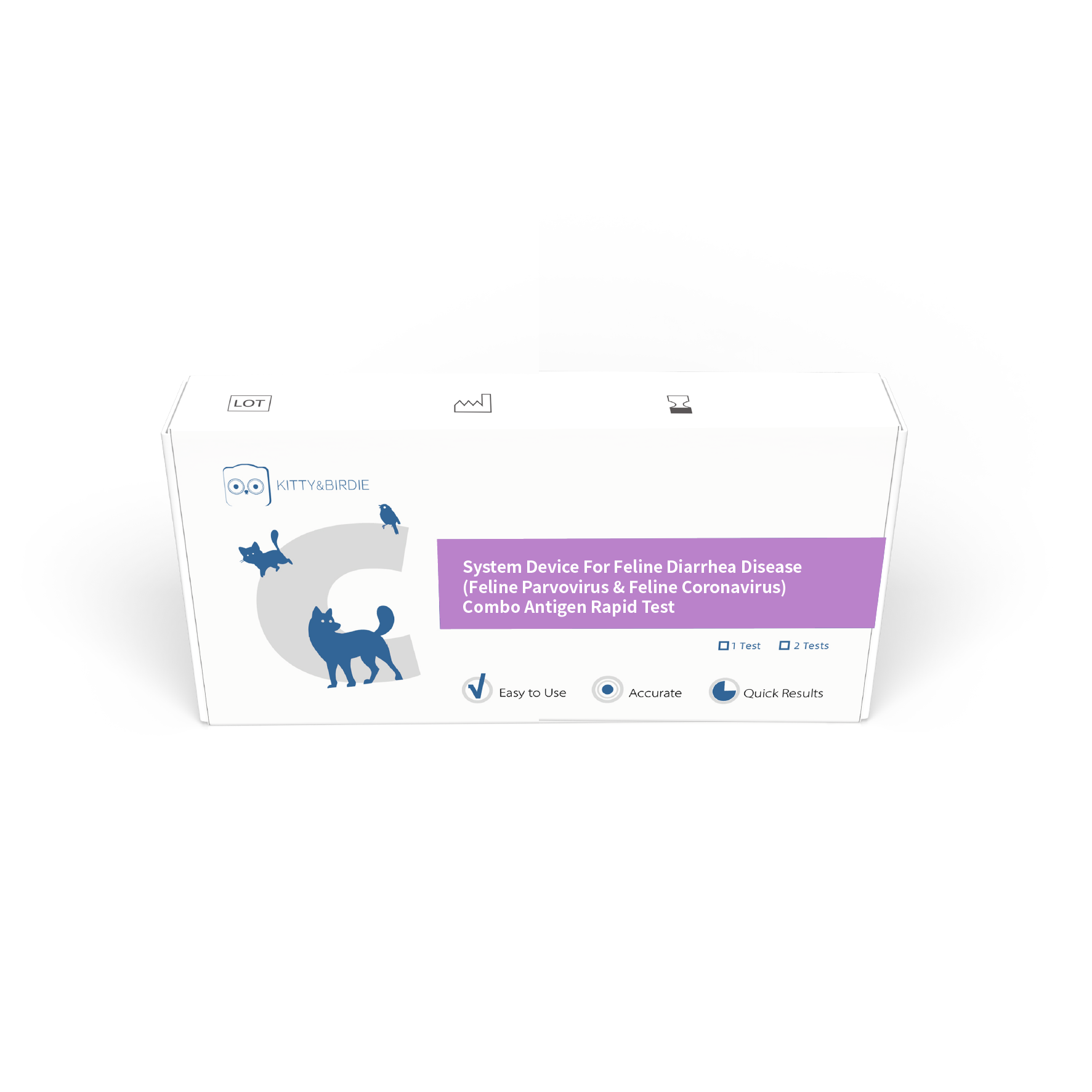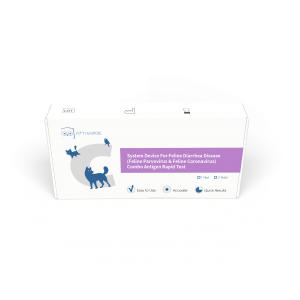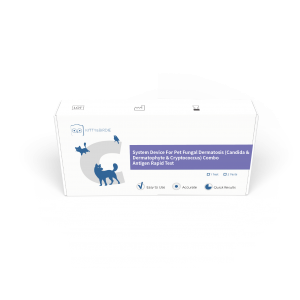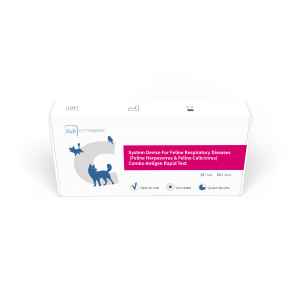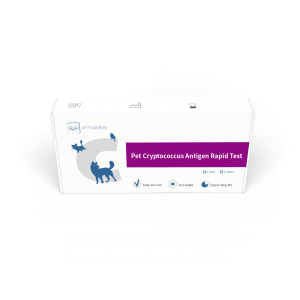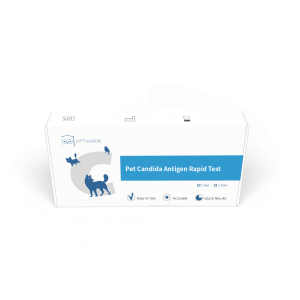System Device For Feline Diarrhea Disease (Feline Parvovirus & Feline Coronavirus) Combo Antigen Rapid Test
The Feline Distemper Virus / Feline Coronavirus Antigen Diagnostic Kit (Latex Immunochromatography) uses specific antigen-antibody reaction and immunochromatography to qualitatively detect the presence of Feline Distemper Virus / Feline Coronavirus in swab samples.
During the test, a drop of processed sample is inserted into the card's spiking well, and the sample liquid is mixed with the latex particles labelled with feline distemper virus/feline coronavirus-specific antibodies pre-coated in a latex binding pad. The mixture is then chromatographed at the opposite end by capillary effect. In the case of a positive sample, the latex-labelled feline distemper virus/feline coronavirus antibody first binds to the feline distemper virus/feline coronavirus antigen in the sample to form a latex*antibody-antigen complex, which is captured by another feline distemper virus/feline coronavirus antibody immobilised in the test zone as it passes over the test zone during the chromatographic process to form a sandwich latex*antibody-antigen-antibody (immobilised in the membrane) complex. A band will appear in the test area (T). In the case of negative samples, since they do not contain feline distemper virus/feline coronavirus antigen, the above sandwich complex will not be formed in the test zone (T) and no band will appear. A biotin-BSA linker is immobilised in the QC zone (C) on the membrane, which will capture the latex particles labelled with affinity pigments chromatographed over from the mixture, forming a latex*affinity pigment-biotin-BSA (immobilised on the membrane) complex in the QC zone (C). As a result, a band will appear in the QC zone (C) regardless of whether feline distemper virus/feline coronavirus is present in the cat swab sample or not. The presence of a band in the QC zone (C) is a criterion for determining whether there is enough sample and whether the chromatographic process is working properly, and also serves as an internal control criterion for the reagent.


